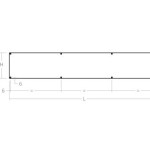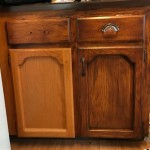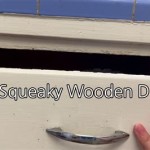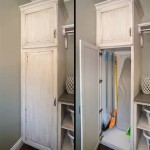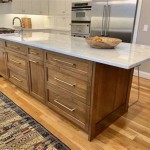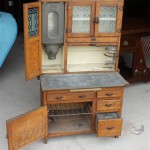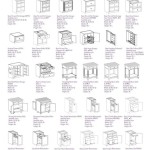Painting Kitchen Cabinets Black Distressed: A Comprehensive Guide
The decision to paint kitchen cabinets black distressed is a significant undertaking that can dramatically alter the aesthetic of a kitchen. This style combines the sleek sophistication of black cabinetry with the timeworn charm of a distressed finish, creating a look that is both modern and rustic. Before embarking on this project, it is vital to understand the involved processes, required materials, and potential challenges to ensure a successful and satisfying outcome. This article will provide a detailed exploration of painting kitchen cabinets black distressed, covering preparation, painting techniques, and distressing methods.
Assessment and Preparation: Laying the Foundation for Success
The success of any painting project, including the distressing of kitchen cabinets, hinges on thorough preparation. This stage involves assessing the existing condition of the cabinets, gathering necessary materials, and meticulously preparing the surfaces for painting. A failure to adequately prepare the cabinets can result in poor paint adhesion, an uneven finish, and a compromised overall aesthetic.
The initial step involves a comprehensive assessment of the cabinet's current state. Consider the type of material the cabinets are made of, whether they are solid wood, veneer, or a laminate composite. Solid wood cabinets are generally the easiest to work with and provide the most durable surface for painting and distressing. Veneer and laminate cabinets require more careful preparation and may not be suitable for aggressive distressing techniques due to the thinness of the surface material.
Next, examine the cabinets for any existing damage, such as scratches, dents, or water damage. These imperfections must be addressed before painting to ensure a smooth and uniform finish. Fill small holes and dents with wood filler, allowing it to dry completely before sanding smooth. For significant damage, consider replacing the damaged cabinet doors or panels altogether.
Before any painting begins, the cabinets must be thoroughly cleaned. Grease, grime, and food splatters can prevent paint from adhering properly, leading to peeling and chipping. Use a degreasing cleaner specifically formulated for kitchen cabinets. Apply the cleaner according to the manufacturer's instructions, ensuring to wipe down all surfaces, including the inside of the cabinet doors and drawers. Rinse thoroughly with clean water and allow the cabinets to dry completely.
Once the cabinets are clean and dry, remove all hardware, including knobs, pulls, hinges, and latches. Store these items in a safe place to prevent loss or damage. If you plan to reuse the existing hardware, clean them thoroughly to remove any accumulated dirt or grime. Consider replacing the hardware with new pieces that complement the distressed black finish. This can further enhance the overall aesthetic of the kitchen.
Sanding is a crucial step in preparing kitchen cabinets for painting. Sanding creates a slightly rough surface that allows the primer and paint to adhere properly. Use a medium-grit sandpaper (around 120-180 grit) to lightly sand all surfaces of the cabinets. Focus on removing any existing gloss or imperfections. For cabinets with a particularly glossy finish, a coarser grit sandpaper may be necessary. After sanding, wipe down the cabinets with a tack cloth to remove any sanding dust. This ensures a clean and smooth surface for priming.
Priming is an essential step that should not be skipped. Primer seals the surface of the cabinets, provides a uniform base for the paint, and improves paint adhesion. Choose a high-quality primer that is specifically formulated for use on kitchen cabinets. Oil-based primers are generally preferred for their superior adhesion and stain-blocking properties. However, they can be more difficult to work with and require proper ventilation. Water-based primers are easier to clean up and have lower VOCs, making them a more environmentally friendly option. Apply the primer according to the manufacturer's instructions, using a brush or roller. Allow the primer to dry completely before proceeding to the next step. Lightly sand the primed surface with fine-grit sandpaper (around 220 grit) to create an even smoother surface for painting.
Finally, protect the surrounding areas before painting. Cover countertops, floors, and appliances with drop cloths or plastic sheeting. Use painter's tape to mask off areas that you don't want to paint, such as walls, backsplashes, and trim. Proper preparation is time-consuming but sets the stage for a professional looking final product.
Painting Techniques: Achieving a Flawless Black Finish
After the cabinets have been thoroughly prepared, the next step is to apply the black paint. Choosing the right type of paint and employing proper painting techniques are crucial for achieving a durable and visually appealing finish. The choice of paint will significantly impact the longevity and aesthetic of the final outcome.
Select a high-quality paint that is specifically formulated for use on kitchen cabinets. Alkyd or acrylic enamel paints are generally recommended for their durability and resistance to chipping and scratching. These paints dry to a hard, smooth finish that is easy to clean. Consider using a paint with a satin or semi-gloss sheen. These sheens are durable and easy to clean, while also providing a subtle sheen that enhances the beauty of the black finish. Avoid using flat or matte paints, as they are more difficult to clean and can show fingerprints and smudges more easily.
Before painting, stir the paint thoroughly to ensure that the color and consistency are uniform. Pour a small amount of paint into a paint tray or container. Use a high-quality brush or roller to apply the paint to the cabinets. For flat surfaces, a roller can provide a smooth and even finish. For intricate details and edges, a brush is necessary. Apply the paint in thin, even coats, avoiding drips and runs. Allow each coat to dry completely before applying the next coat. Multiple thin coats are preferable to one thick coat, as they will result in a more durable and even finish.
When painting with a brush, use long, smooth strokes, following the grain of the wood. Avoid applying too much pressure, as this can cause brush marks to appear in the paint. When painting with a roller, use a light touch and roll in a consistent direction. Overlapping each stroke slightly to ensure complete coverage. After applying each coat of paint, inspect the surface for any imperfections, such as drips, runs, or brush marks. Use fine-grit sandpaper to gently sand away any imperfections before applying the next coat.
Typically, two to three coats of paint are necessary to achieve full coverage and a rich, even black finish. Allow the final coat of paint to dry completely before proceeding to the distressing stage. The drying time will vary depending on the type of paint used and the ambient temperature and humidity. Refer to the manufacturer's instructions for specific drying times.
Consider using a paint sprayer for a more professional looking finish. A paint sprayer can apply paint evenly and quickly, resulting in a smooth, flawless finish. However, using a paint sprayer requires more skill and preparation than using a brush or roller. It is important to practice using the sprayer on a scrap piece of wood before painting the cabinets. Also, ensure adequate ventilation and wear appropriate protective gear, such as a respirator mask and safety glasses.
Between coats, lightly sand the painted surface with fine-grit sandpaper (around 320 grit) to remove any imperfections and create a smooth surface for the next coat of paint. Wipe down the cabinets with a tack cloth to remove any sanding dust. This ensures a clean and even surface for the final coat of paint.
Distressing Techniques: Adding Character and Charm
The distressing stage is where the cabinets acquire their unique character and timeworn charm. There are several techniques that can be used to distress painted kitchen cabinets, each resulting in a slightly different look and feel. The choice of distressing technique will depend on the desired aesthetic and the level of effort you are willing to invest.
One of the most common distressing techniques is sanding. This involves using sandpaper to gently remove paint from certain areas of the cabinets, revealing the underlying wood or primer. Focus on areas that would naturally experience wear and tear over time, such as edges, corners, and raised panels. Use fine-grit sandpaper (around 220 grit) to start, and gradually increase the grit if necessary. Sand in the direction of the wood grain and avoid sanding too aggressively, as this can damage the underlying surface. Experiment with different sanding techniques to achieve the desired level of distress. For example, you can use a sanding block for a more uniform look or use your fingers to create a more random and textured effect.
Another popular distressing technique is dry brushing. This involves using a dry brush with a small amount of paint to create a textured and uneven finish. Dip the tip of a dry brush into a contrasting color paint, such as white or gray. Wipe off most of the paint on a paper towel before applying it to the cabinets. Use light, quick strokes to apply the paint to the edges, corners, and raised panels. The dry brush technique creates a subtle and textured effect that adds depth and dimension to the distressed finish.
A third distressing technique is using a distressing glaze. A distressing glaze is a translucent coating that is applied over the paint and then wiped away, leaving a subtle antique effect. Apply the glaze to the cabinets with a brush or rag and then immediately wipe it away with a clean rag. Experiment with different application and wiping techniques to achieve the desired level of distress. A distressing glaze can be used to highlight details and add depth to the distressed finish.
Hammering and denting are more aggressive distressing techniques that can be used to create a more rustic and timeworn look. Use a hammer or other blunt object to create small dents and dings on the surface of the cabinets. Focus on areas that would naturally experience impact and wear and tear. Be careful not to damage the cabinets excessively. This technique can be combined with sanding and dry brushing to create a layered and textured distressed finish.
Once the distressing is complete, apply a protective top coat to seal the finish and protect it from wear and tear. Choose a clear top coat with a satin or matte sheen. Apply the top coat according to the manufacturer's instructions, using a brush or roller. Allow the top coat to dry completely before reattaching the hardware and reinstalling the cabinets. The top coat will protect the distressed finish and make the cabinets easier to clean.
Remember to work in a well-ventilated area when using paints, primers, and top coats. Wear appropriate protective gear, such as a respirator mask and safety glasses. Dispose of all materials properly according to local regulations. Review all aspects of the project diligently before undertaking. With careful planning and execution, painting kitchen cabinets black distressed can be a rewarding project that transforms the look and feel of the entire kitchen.

Pin By Mary Kate Mccormack On My Diy Adventures Distressed Kitchen Cabinets Rustic

Kaem Org Distressed Kitchen Cabinets Black

The Final Black Distressed Cabinets Kitchen

July 2024 Distressed Kitchen Cabinets Black

Kitchen Cabinets With A Distressed Finish Toms River Nj Patch

Black Kitchen Cabinets The Ugly Truth At Home With Barkers

Faux Painting How To Create A Black Rustic Cabinet Finish

How To Make A Small Kitchen Look Good With Black Cabinets Esp Painting Portland Or

Kitchen Cabinet Painting Franklin Tn Painters

Black Furniture Heavily Distressed Reclaim Beyond Paint
Related Posts

